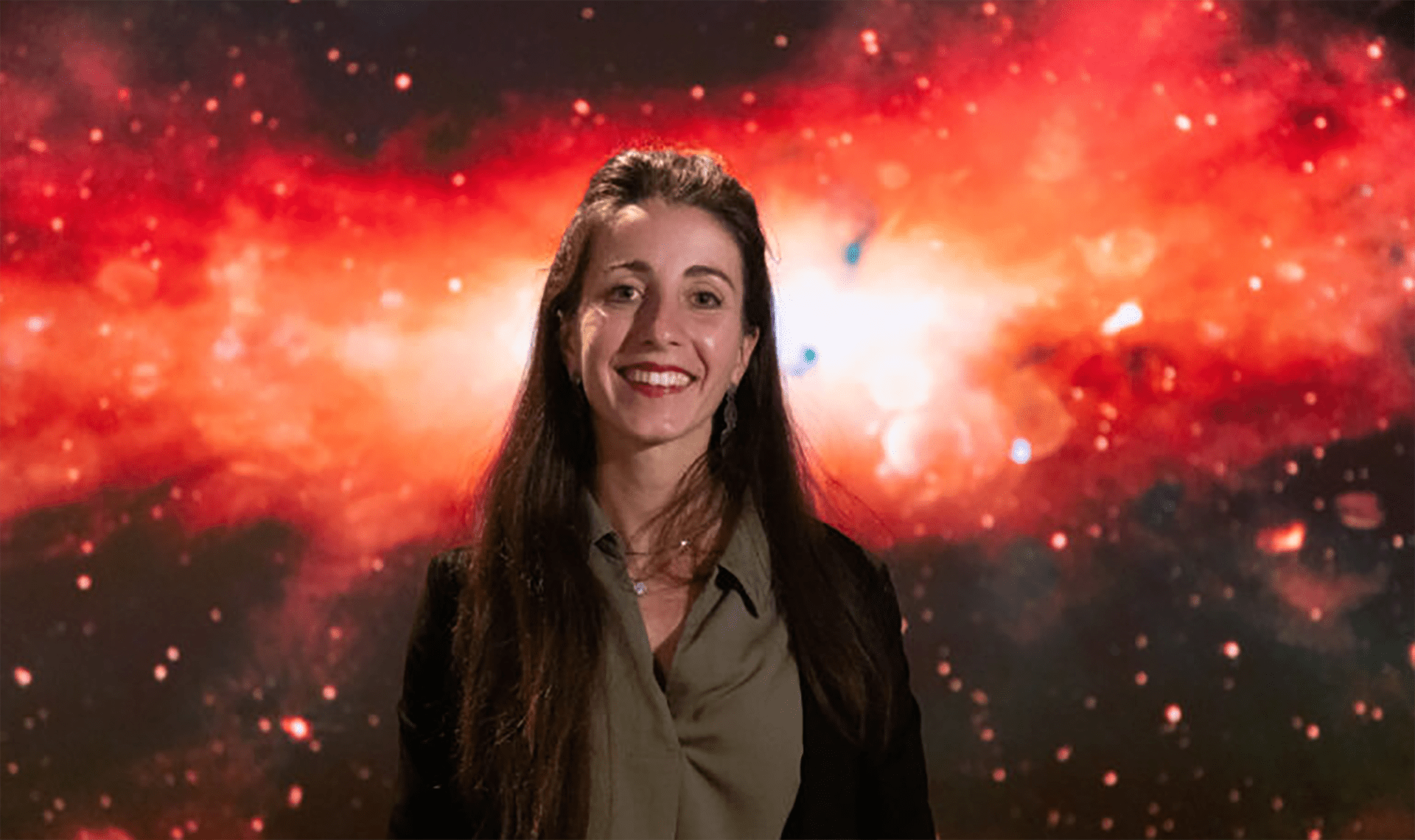Astronomers at the International Centre of Radio Astronomy Research (ICRAR) have developed the biggest low-frequency radio color image of the Milky Way ever compiled. The findings were reported in the journal Publications of the Astronomical Society of Australia (PASA).
 Silvia Mantovanini, with the galactic core in the background. Image Credit: Curtin University
Silvia Mantovanini, with the galactic core in the background. Image Credit: Curtin University
This amazing new image depicts the Southern Hemisphere perspective of the Milky Way, presenting it over a wide spectrum of radio wavelengths, or ‘colors’ of radio light.
Silvia Mantovanini, a PhD student at Curtin University node of ICRAR, spent 18 months and over 40,000 hours building the image using supercomputers at the Pawsey Supercomputing Research Centre to process and assemble data from two large surveys.
The surveys were carried out using the Murchison Widefield Array (MWA) telescope at Inyarrimanha Ilgari Bundara, the CSIRO Murchison Radio-Astronomy Observatory in Wajarri Yamaji Country, Western Australia.
These were the GaLactic and Extragalactic All-sky MWA (GLEAM) and GLEAM-X (GLEAM eXtended) surveys, which took place during 28 nights in 2013 and 2014, and 113 nights from 2018 to 2020.
This new image, which focuses on the Milky Galaxy, has twice the resolution, ten times the sensitivity, and covers twice the area as the last GLEAM image released in 2019. This tremendous advance in resolution, sensitivity, and sky coverage enables astronomers to conduct more extensive studies of the Milky Way, yielding a plethora of new data and insights.
This vibrant image delivers an unparalleled perspective of our Galaxy at low radio frequencies. It provides valuable insights into the evolution of stars, including their formation in various regions of the Galaxy, how they interact with other celestial objects, and ultimately their demise.
Silvia Mantovanini, PhD Student, International Centre for Radio Astronomy Research, Curtin University
Ms Mantovanini’s study focuses on supernova remnants, which are expanding clouds of gas and energy left behind after a star explodes near the end of its life. Although hundreds of these fragments have been detected thus far, astronomers believe that thousands more are still to be found.
The image enables them to distinguish between the gas around young stars and that left behind by dead stars, showing more detailed patterns in the cosmic landscape.
You can clearly identify remnants of exploded stars, represented by large red circles. The smaller blue regions indicate stellar nurseries where new stars are actively forming.
Silvia Mantovanini, PhD Student, International Centre for Radio Astronomy Research, Curtin University
The image might also help solve the riddles surrounding the Galaxy’s pulsars. Astronomers seek to acquire a better knowledge of how and where pulsars exist in the Galaxy by monitoring their brightness at various GLEAM-X frequencies.
Associate Professor Natasha Hurley-Walker of the same ICRAR team, who is the principal investigator of the GLEAM-X survey, emphasized that this is a significant step forward in the understanding of the Milky Way’s structure.
This low-frequency image allows us to unveil large astrophysical structures in our Galaxy that are difficult to image at higher frequencies. No low-frequency radio image of the entire Southern Galactic Plane has been published before, making this an exciting milestone in astronomy.
Natasha Hurley-Walker, Associate Professor, International Centre for Radio Astronomy Research, Curtin University
“Only the world’s largest radio telescope, the SKA Observatory’s SKA-Low telescope, set to be completed in the next decade on Wajarri Yamaji Country in Western Australia, will have the capacity to surpass this image in terms of sensitivity and resolution,” concluded Hurley-Walker.
Using the MWA radio telescope at the CSIRO Murchison Radio-astronomy Observatory near Inyarrimanha Ilgari Bundara, hundreds of hours of data were collected for the surveys. A remarkable 98,000 radio sources were cataloged by the ICRAR researchers throughout the Galactic Plane that can be seen from the southern hemisphere.
These sources included a variety of pulsars, planetary nebulae, compact HII regions, which are dense, ionized gas clouds in space, and far-off galaxies that are not related to the Milky Way.
Journal Reference:
Mantovanini, S. et.al. (2025) GaLactic and extragalactic all-sky Murchison Widefield Array survey eXtended (GLEAM-X) III: Galactic plane. Publications of the Astronomical Society of Australia (PASA). doi.org/10.1017/pasa.2025.10094